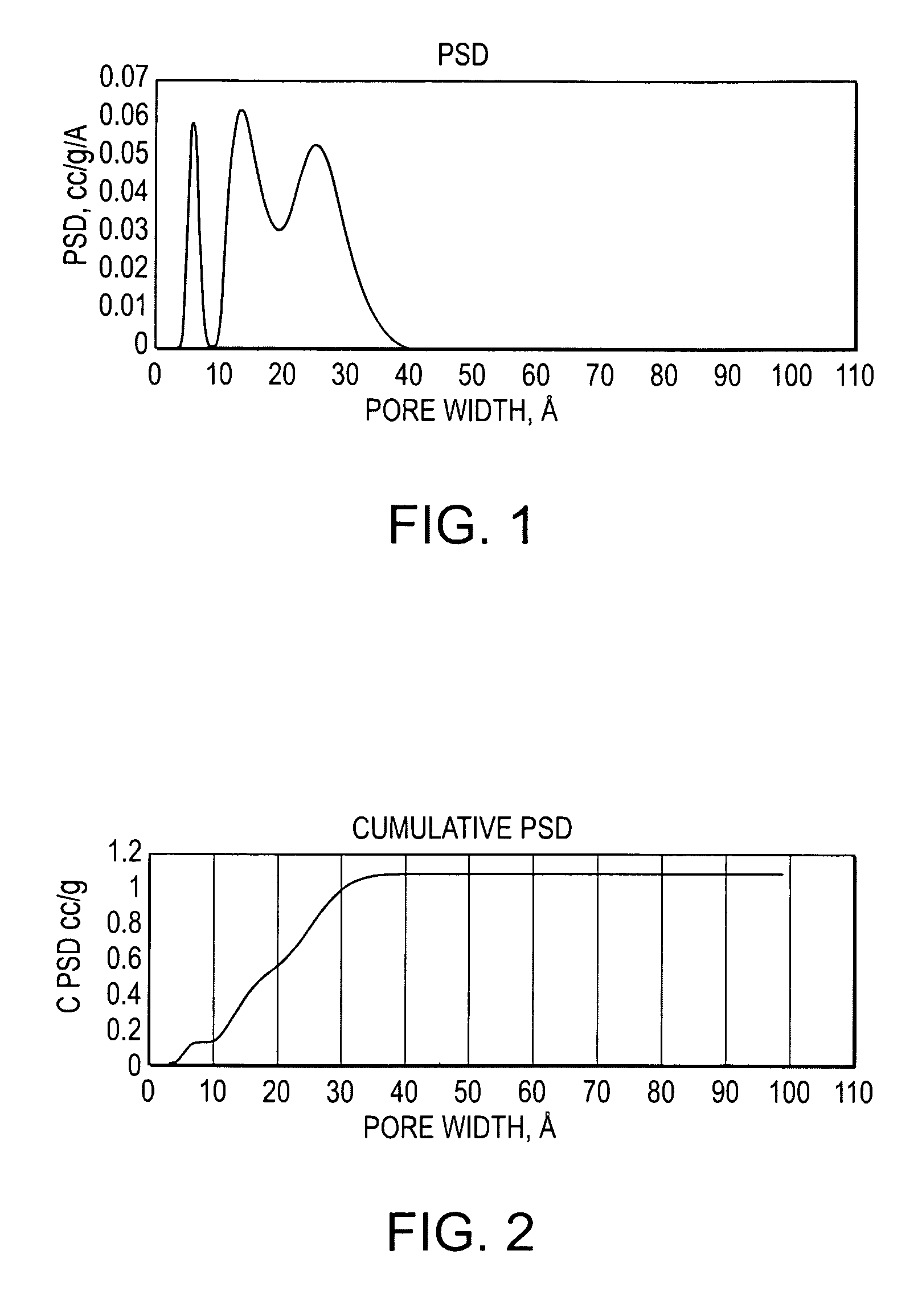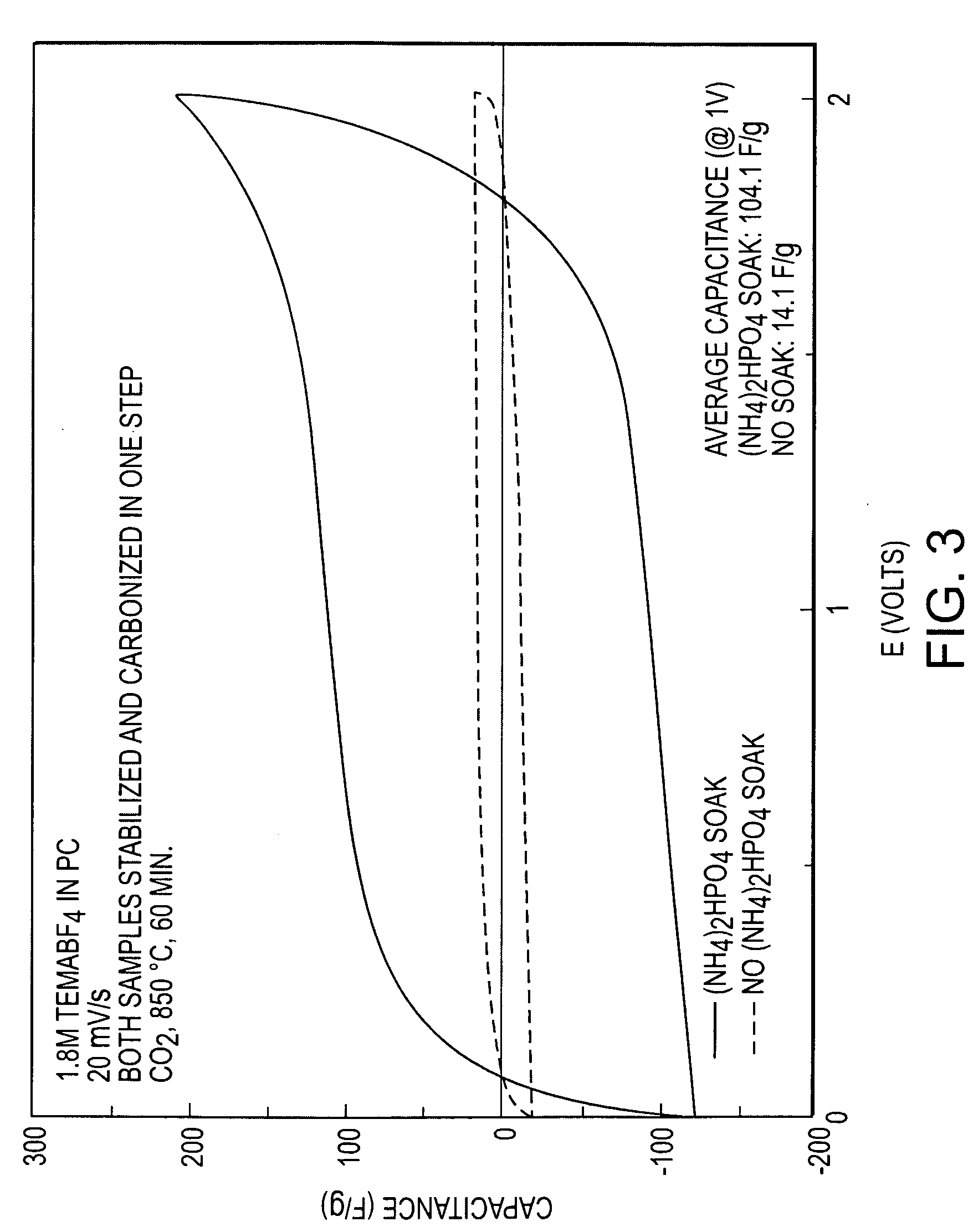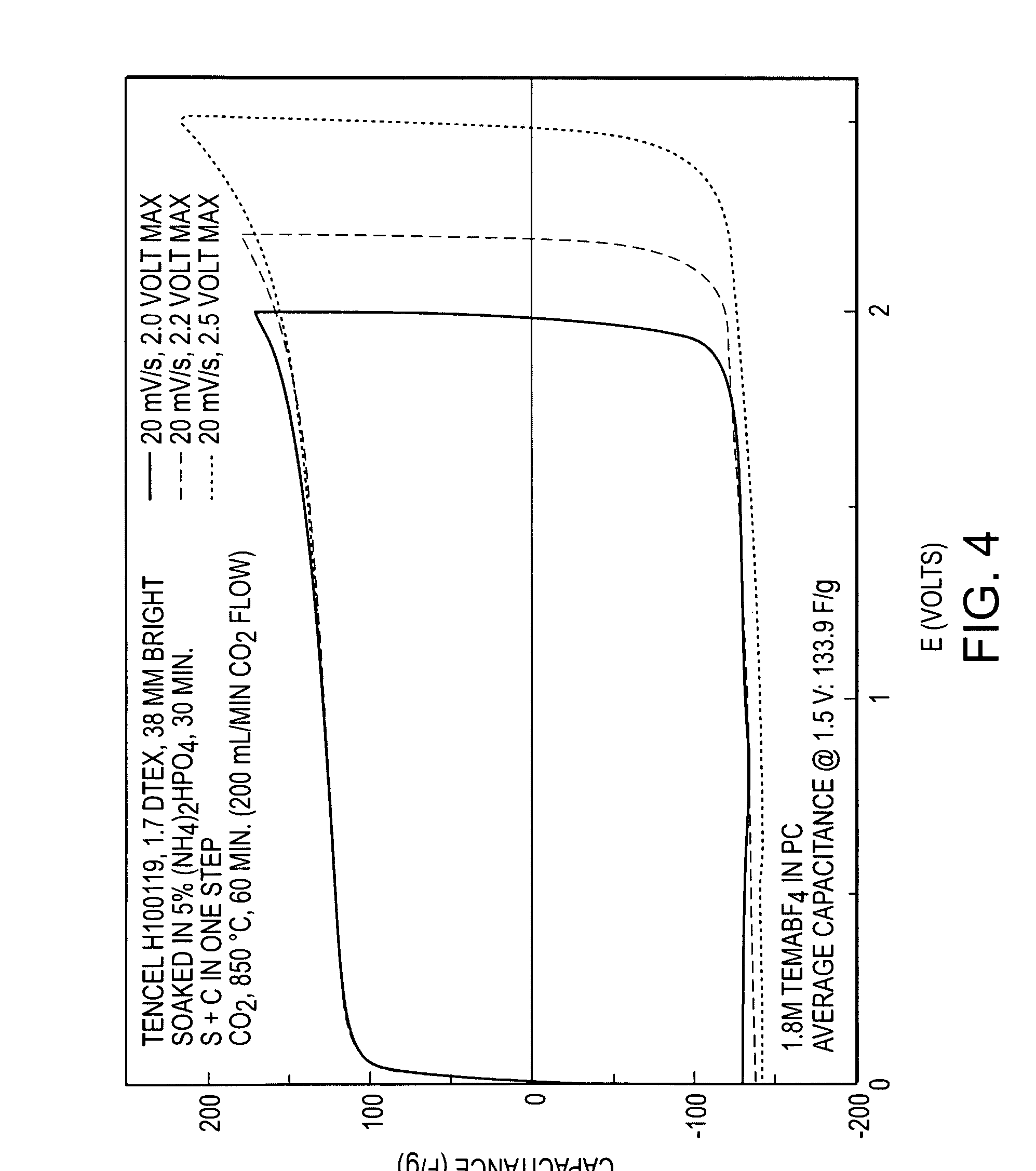Methods of forming activated carbons
a technology of activated carbons and carbon nanotubes, which is applied in the field of activated carbons, can solve the problems of high cost, marginal or unacceptable performance of current technology, and each approach has significant limitations, and achieves improved control of nanoparticle catalyzed, high energy density, and high energy density
- Summary
- Abstract
- Description
- Claims
- Application Information
AI Technical Summary
Benefits of technology
Problems solved by technology
Method used
Image
Examples
example 1
[0070]The Rayon of Comparative Example 1 was submerged in a 5% aqueous solution of diammonium phosphate ((NH4)2HPO4, hereinafter DAP, a common phosphorous derivative used as a plant fertilizer and fire retardant) for 30 minutes. The DAP coated Rayon was then oven dried. The DAP coated Rayon was carbonized / activated for 60 minutes under N2 at 850° C. and then compound activated by adding 200 mL / min CO2 at 850° C. for 60 minutes. The activated carbon mass loss was 83.7%, the BET surface was 2452 m2 / g, the TPV was 1.12943 cc / g, and the micropore proportion was only 44.8%. The material was 55.4% mesoporous.
[0071]This is less mass loss than Comparative Example 1, yet much higher surface area (over double), TPV (over double), and desirable mesopore volume and surface (over double). The material also has much more total surface than Comparative Example 2, which utilized carbon dioxide alone, and importantly with a majority of desirable mesopores, as shown by pore size distribution and cumu...
example 2
[0075]A Tencel® rayon fiber from Lenzing AG with a preferable smaller average diameter of 12 microns (Tencel H100119, dtex 1.7) was compound activated according to the method of Example 1 to produce an electrocarbon. The mass loss from green fiber was 63.7%, the BET surface was 2134 square meters / gram, the total pore volume was 0.85082 cc / g, and the mesopore proportion was 19.3%. The material's specific capacitance in working devices with 1.8 molar TEMA / PC electrolyte was 133.9 F / g at one volt of charge, with a near ideal CV as shown in FIG. 4. Results of Comparative Example 2 and Example 2 are summarized in Table 2 below.
TABLE 2ComparativeExample 2Example 2BET760m2 / g2134m2 / gTotal Pore0.3269cc / g0.85082cc / gVolumeCapacitance14.1F / g133.9F / g
[0076]Constant current charge discharge tests were run for devices made with the material of Example 2 at high current densities of up to 5 A / g. The results of these tests are shown in FIG. 5. The tests demonstrate to one of skill in the art that tru...
example 3
[0078]Tencel rayon fiber dtex 1.7 as in Example 2 was compound activated as in Examples 1 and 2. However, the activation time with carbon dioxide was increased to 75 minutes at 850° C. The mass loss from the green fiber was 71.3% (more than in Example 2 due to the longer activation time), the resulting BET surface was 2307 square meters per gram (only 8% more than Example 2), the total pore volume was 1.07 cc / g (desirably 25% more than Example 2), and the mesopore proportion was 45% (desirably 25.7% more than Example 2). Specific capacitance of the resulting material was 160.1 F / g measured at 20 mV / s at 1.5 volts of charge, and 156.5 F / g at 1.0 volts of charge. Linear constant current charge discharge curves to 2.5 amperes / g indicate true double layer capacitance, and impedance spectroscopy showed a surprising small region of Warburg impedance on the Nyquist plot, indicating excellent mass transport and very high power density despite the very high energy density.
[0079]While many ca...
PUM
| Property | Measurement | Unit |
|---|---|---|
| size | aaaaa | aaaaa |
| size | aaaaa | aaaaa |
| pore size | aaaaa | aaaaa |
Abstract
Description
Claims
Application Information
 Login to View More
Login to View More - R&D
- Intellectual Property
- Life Sciences
- Materials
- Tech Scout
- Unparalleled Data Quality
- Higher Quality Content
- 60% Fewer Hallucinations
Browse by: Latest US Patents, China's latest patents, Technical Efficacy Thesaurus, Application Domain, Technology Topic, Popular Technical Reports.
© 2025 PatSnap. All rights reserved.Legal|Privacy policy|Modern Slavery Act Transparency Statement|Sitemap|About US| Contact US: help@patsnap.com



